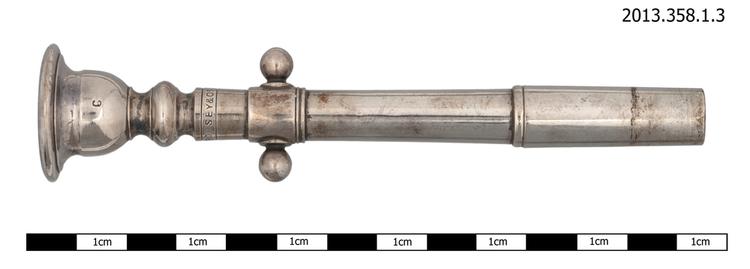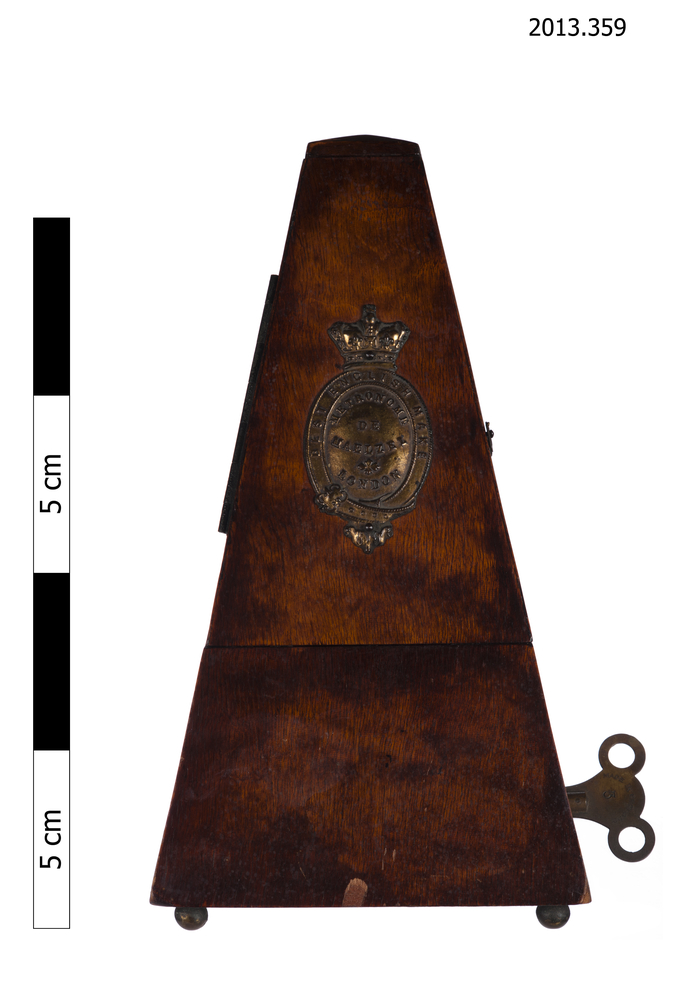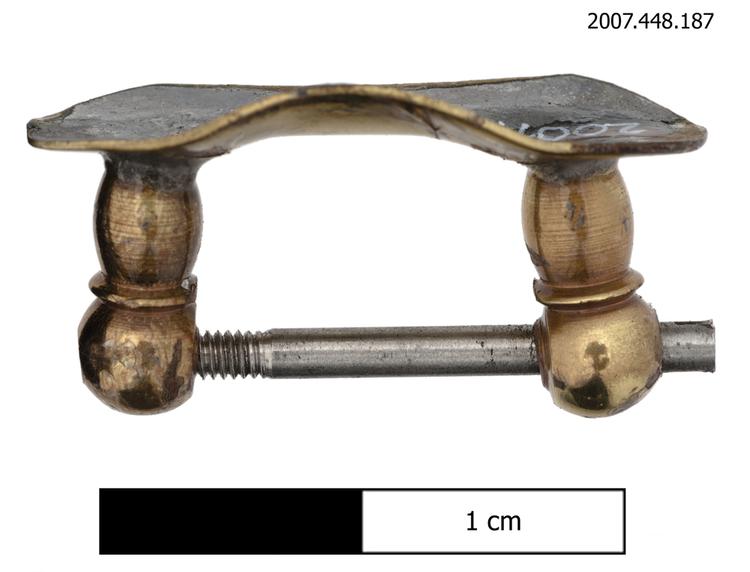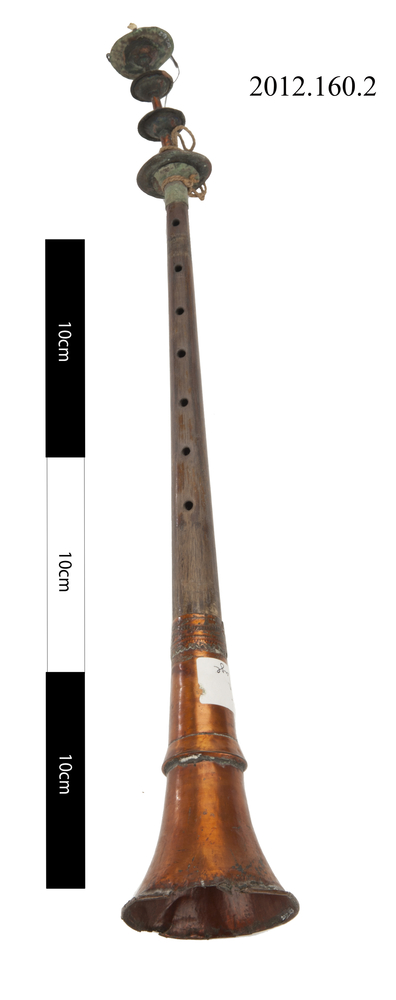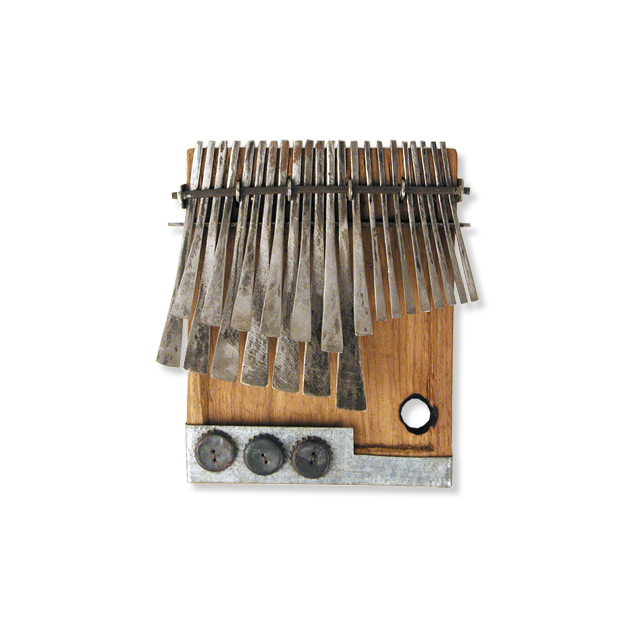
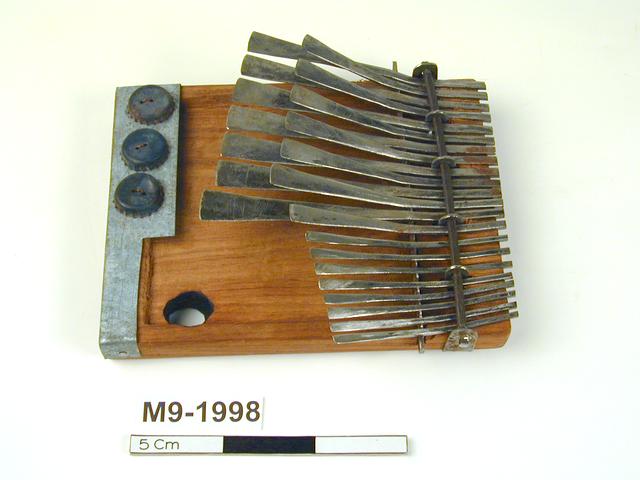
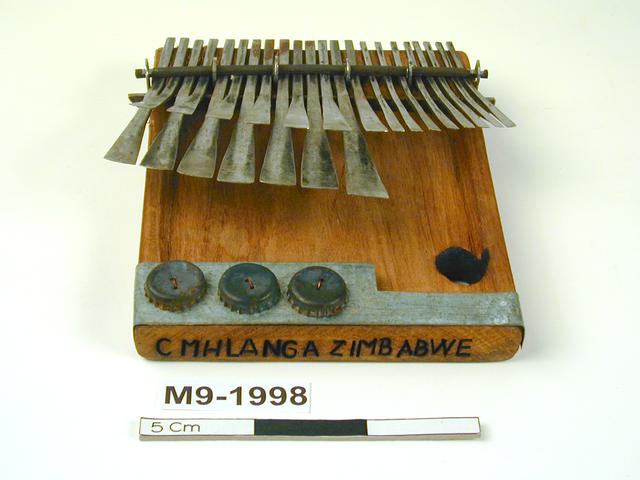
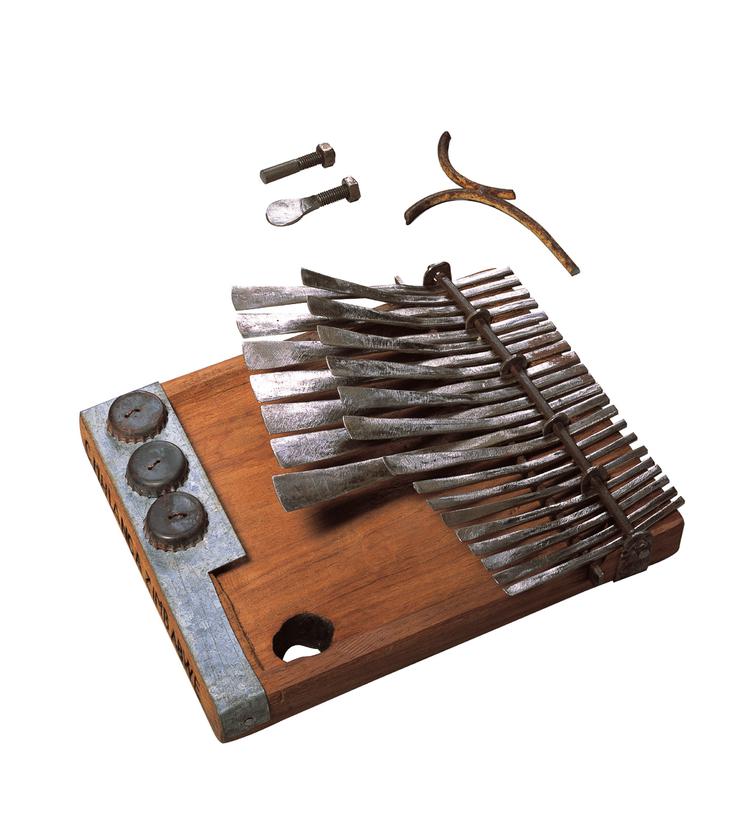
Mbira dza vadzimu made from iron and wood. The keys, or lamellae, are made from scrap iron. There are twenty two flat ended lamellae in all: nine on the right; seven on the lower left row and six on the higher left row. The lamellae are secured to the soundboard by an upper and lower bridge with a straining bar between the two. The soundboard is a square grooved piece of mukwa wood with a hole for the right little finger on the bottom right hand corner. Overall the lamellae are arranged in a V-shape. Bottle caps mounted on soundboard.
The mbira dza vadzimu is traditionally played by the Shona-speaking people of Zimbabwe. The mbira dza vadzimu is placed in a gourd which amplifies the sound. Usually two or more performers play repeated patterns of notes against each other. The resulting sound is a dense, contrapuntal texture. The bottle caps on the soundboard create a buzzing sound.




